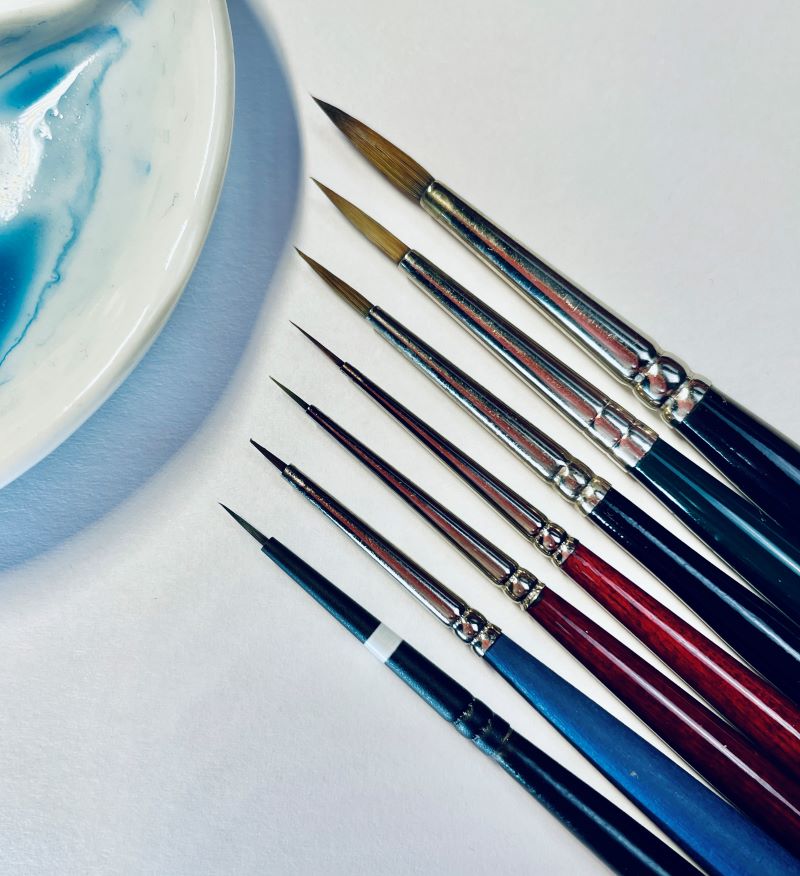I teach three mediums: graphite; coloured pencil; and watercolour. While they have their obvious differences in technique application and material content, they have one essential aspect in common—the point.
In all three of these mediums you simply cannot produce great results in botanical art without paying serious attention to the point. If you ever compromise on this crucial element you will see the impact in less-than-satisfactory results very quickly.
With this in mind I want to discuss brushes and their points.
You have two options in brushes—animal or synthetic. While either can give you the sharp points you need, they both have their pros and cons.
For as long as I can remember, I have been a fan of the gold standard of brushes for watercolourists—the Kolinsky sable brushes. Their superior point retention has been without equal.
However, in recent years there’s been an apparently steady conversion from animal hair brushes to synthetic material. And it’s not just because animal hair brushes are more expensive and have become harder to find. It’s also because there is a lingering perception fueled by information on the internet that the hair is inhumanely sourced from small animals, primarily weasels, by trapping or slaughter. However, we’re assured by reputable brush manufacturers that this is not true and that licensing and strict controls are placed on the producers from whom they source the hair.
For some, the potential animal cruelty aspect may be enough incentive to switch to synthetic brushes. But that too has its issues.
Synthetic brushes are made from nylon which is produced from a non-renewable resource—oil—in an energy-intensive process. Nylon sheds non-biodegradable microplastic fibers that end up in waterways and oceans when it’s washed. It can be argued though that the small amount of nylon used in a brush is insignificant when compared with, say, a nylon garment. And while certain nylons can apparently be recycled, I am yet to see a synthetic brush claiming to be made of a recyclable nylon.
This poses a dilemma—with which option are we less uncomfortable?
I’ve been dwelling on this question for some time. For instance, this past summer we spent a week in Florence which included an hour in the famous art supply store, Zecchi. I was there to specifically discuss and look at brushes. I wanted to see what Italian artists in the heart of an art-centric city were doing about finer brushes and how they viewed the animal verse synthetic question.
The answer came swiftly and without hesitation—synthetic brushes have “improved” so much that European artists are rapidly switching, mostly due to cost. However, while it’s true that synthetic brushes costs less than animal-hair brushes, the former don’t last nearly as long as the latter. I’m not sure artists realise that a true cost comparison should take into account durability.
I asked for their most popular fine-detail synthetic brushes and was surprised to find that they carried a 10/0, 15/0 and 20/0 brush. I ended up purchasing these sizes in three different brands. I am still testing them so I’m not yet ready to report much at this point other than that, so far, I have enjoyed the ones I’ve tried. They certainly meet my point requirements.
So, in considering our brush choices, we need to thoughtfully weigh up all the evidence. I, for one, am continuing my investigation determined to find a sustainable, reasonably-priced, eco-friendly brush that holds the point I require.
If you have any ideas or insights on brush choices, I’d love to hear them.

